Each of these trees brings its distinctive flair to the fall garden, creating a mosaic of colors that celebrate the season's beauty.
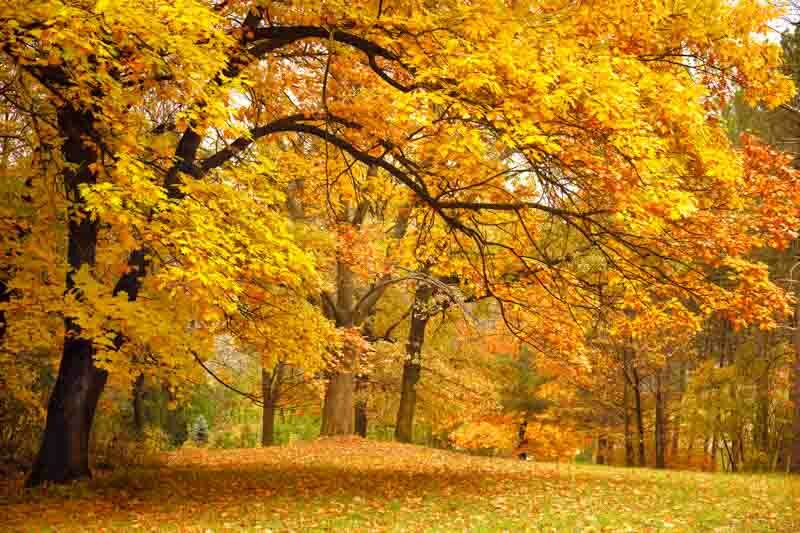
As the days shorten and the air chills, nature begins its most dramatic display of color. The transition from the lush greens of summer to the rich, vibrant autumn hues is a spectacle that draws crowds outdoors. Among the natural performers in this seasonal show are a variety of trees, each contributing its unique shade to the autumnal palette. These trees, with their spectacular fall colors, not only enhance the landscape’s beauty but also provide ecological benefits, offering habitat and food for wildlife while marking the cycles of life and change.
Spectacular trees for vibrant fall color are not just a feast for the eyes; they symbolize change, renewal, and the passage of time. They stand as timeless sentinels, celebrating the year’s cycle with a final burst of energy and color before the quiet of winter sets in. From the fiery reds of maples to the golden yellows of ginkgo trees and the deep purples of crepe myrtles, these trees are nature’s masterpieces, painting our landscapes with strokes of brilliance and warmth.
Leaves change color in the fall due to changes in daylight and temperature, which trigger chemical processes in the plant. During the growing season, leaves contain chlorophyll, which gives them their green color and helps with photosynthesis. As daylight decreases and temperatures cool in autumn, chlorophyll production slows and eventually stops. When this happens, other pigments present in the leaf become visible. Carotenoids, always present in leaves but overshadowed by chlorophyll, become prominent, showcasing yellows and oranges. Anthocyanins, which are not always present during the growing season, may also be produced in the fall, lending reds and purples to the foliage.
Fall colors refer to the rich palette of colors that leaves turn before they fall off the trees. This includes:
Reds and Purples: Caused mainly by anthocyanins produced in response to bright light and excess plant sugars within leaf cells.
Yellows and Oranges: Brought out by carotenoids, present in leaves year-round but become visible as chlorophyll fades.
Browns: Result from the presence of waste products trapped in the leaves.
The variety and intensity of fall colors are influenced by the plant species, soil conditions, weather patterns (particularly sunny days and cool nights), and geographic location.
Here are 40 of the best trees for fall color, known for their stunning displays that capture the essence of autumn:
The Sugar Maple, Acer saccharum, dazzles with autumn hues of yellows, oranges, and reds. Esteemed for its dense crown and striking fall foliage, this tree also yields sap for maple syrup, requiring about 40 gallons to produce one gallon of syrup. Its leaf symbolizes Canada, reflecting its cultural and ecological significance.
| Hardiness | 3 - 9 |
|---|---|
| Exposure | Full Sun, Partial Sun |
| Height |
40' - 80' (12.2m - 24.4m) |
| Spread |
30' - 60' (9.1m - 18.3m) |
Acer rubrum, known as the Red Maple, features stunning fall colors and a fast growth rate. It starts with a pyramidal shape, maturing into a rounded form. Early spring brings red flowers, succeeded by red fruit. Leaves emerge with a red tinge, turn dark green, then shift to brilliant yellows and reds in autumn. Its smooth, gray bark, aging to ridged and furrowed, adds winter interest. Ideal for lawns and street plantings, the Red Maple is a versatile and visually appealing choice.
| Hardiness | 3 - 9 |
|---|---|
| Exposure | Full Sun, Partial Sun |
| Height |
40' - 70' (12.2m - 21.3m) |
| Spread |
30' - 50' (9.1m - 15.2m) |
The American Aspen, or Populus tremuloides, is a medium-sized deciduous tree with a slender, pyramidal shape and a rounded crown. Its dark green, finely-toothed leaves transform into a vibrant golden-yellow in autumn. The leaves possess flat stems, allowing them to quiver in even the gentlest wind, creating a perpetual rustling sound. Before leaves appear in mid-spring, male and female blooms emerge on separate trees in distinct catkins. Female blossoms yield small, drooping fruit clusters. Initially smooth and greenish-white, the bark later develops furrows and diamond-shaped pores.
| Hardiness | 2 - 8 |
|---|---|
| Exposure | Full Sun |
| Height |
20' - 50' (6.1m - 15.2m) |
| Spread |
10' - 30' (3m - 9.1m) |
Liquidambar styraciflua, or Sweet Gum, is a striking deciduous tree native to eastern North America, known for its aromatic, star-shaped foliage that turns vibrant orange, crimson, and purple in fall. It features a straight trunk and evolves from a narrow, erect shape to an oblong or rounded crown. The tree’s winter appeal includes its branching pattern, furrowed bark, and corky twig wings. Spring brings yellow-green flowers, followed by distinctive spiky gum balls. Ideal as a shade or specimen tree, it thrives in moist soils near water bodies.
| Hardiness | 5 - 10 |
|---|---|
| Exposure | Full Sun |
| Height |
60' - 80' (18.3m - 24.4m) |
| Spread |
40' - 60' (12.2m - 18.3m) |
Black Gum (Nyssa sylvatica) is a remarkable shade tree that stands out in the fall. Its dense, pyramidal shape and glossy dark green leaves make it a stunning addition. In spring, inconspicuous flowers attract bees, followed by small blue fruits enjoyed by wildlife. Come autumn, the foliage transforms into a breathtaking array of scarlet, orange, purple, and gold. The textured bark adds to its allure.
| Hardiness | 3 - 9 |
|---|---|
| Exposure | Full Sun, Partial Sun |
| Height |
30' - 50' (9.1m - 15.2m) |
| Spread |
20' - 30' (6.1m - 9.1m) |
Quercus coccinea, known as Scarlet Oak, is a large deciduous tree with a youthful pyramidal habit, maturing into an open, spreading form. Its dark green leaves turn a brilliant red and scarlet in fall, creating a stunning display. Spring brings yellow-green catkins and reddish new leaves. The acorns are partially encased in a cap. Celebrated for its spectacular autumn color, tolerance to poor soil, and wind resistance, Scarlet Oak is a favorite for landscaping, particularly as a shade or specimen tree in large spaces.
| Hardiness | 5 - 9 |
|---|---|
| Exposure | Full Sun |
| Height |
50' - 70' (15.2m - 21.3m) |
| Spread |
40' - 50' (12.2m - 15.2m) |
Quercus rubra, or Red Oak, is a fast-growing, large deciduous tree famous for its spectacular fall color. It features an open, rounded to broad-spreading crown. Its broad, dark green leaves with 7-11 toothed lobes turn a striking russet-red to bright red in autumn. Spring brings yellow-green catkins and new leaves of dusty bronze-red, rivaling the beauty of spring-flowering trees. The branches and upper trunk are marked with pale gray lines, resembling ski trails. The acorns, a crucial food source for wildlife, may take up to 40 years to appear. Red Oak is a handsome, adaptable tree, perfect as a specimen in large or urban spaces.
| Hardiness | 5 - 9 |
|---|---|
| Exposure | Full Sun |
| Height |
50' - 70' (15.2m - 21.3m) |
| Spread |
50' - 70' (15.2m - 21.3m) |
Quercus alba, known as White Oak, is celebrated as a noble American oak. This large deciduous tree begins with a pyramidal shape, becoming rounded with age. Its leaves transition from pink to dark green, then to russet-red in fall. Inconspicuous yellow-green catkins appear in spring. The tree’s ash gray bark and rich brown acorns add winter interest and provide vital wildlife sustenance. Fast-growing and long-lived, it’s an excellent choice for shade in large areas, especially favored in Western gardens.
| Hardiness | 3 - 9 |
|---|---|
| Exposure | Full Sun |
| Height |
50' - 80' (15.2m - 24.4m) |
| Spread |
50' - 80' (15.2m - 24.4m) |
Fagus grandifolia, or American Beech, is a grand deciduous tree from eastern North America, featuring a short trunk and a broad, dense crown. Its dark green, serrated leaves turn russet and gold in fall, lingering into winter. The tree’s hallmark is its smooth, silver-gray bark, providing striking winter interest. Spring reveals small, yellow-green flowers, succeeded by edible, bristly fruits. Perfect as a shade or specimen tree, the American Beech dominates large landscapes with its sturdy presence.
| Hardiness | 3 - 9 |
|---|---|
| Exposure | Full Sun, Partial Sun |
| Height |
50' - 80' (15.2m - 24.4m) |
| Spread |
40' - 80' (12.2m - 24.4m) |
Carpinus caroliniana, or American Hornbeam, showcases year-round beauty. This slow-growing, deciduous tree has an upright-spreading habit and a rounded crown. Leaves, emerging reddish-purple, become dark green, then shift to yellow to orange-red in fall. Spring catkins lead to winged nutlets, enhancing its appeal. The fluted blue-gray winter bark adds landscape value. Ideal for naturalizing or as a specimen in shaded areas, it’s native to eastern North America and perfect for woodlands, streamsides, or urban settings.
| Hardiness | 3 - 9 |
|---|---|
| Exposure | Full Sun, Partial Sun, Shade |
| Height |
20' - 30' (6.1m - 9.1m) |
| Spread |
20' - 30' (6.1m - 9.1m) |
Cercidiphyllum japonicum, the Katsura Tree, is an elegant deciduous tree prized for its beautiful shape and attractive foliage. With heart-shaped leaves that change color from reddish-purple to blue-green, and finally to gold, orange, and red in fall, it offers year-round visual appeal.
| Hardiness | 4 - 8 |
|---|---|
| Exposure | Full Sun, Partial Sun |
| Height |
40' - 50' (12.2m - 15.2m) |
| Spread |
25' - 35' (7.6m - 10.7m) |
Sassafras albidum, a native North American tree, is renowned for its distinctively shaped leaves, aromatic properties, and vibrant fall colors. It offers ecological benefits, attracts wildlife, and historically, its roots were used to flavor beverages like root beer. This deciduous tree adds unique character to natural landscapes.
| Hardiness | 4 - 9 |
|---|---|
| Exposure | Full Sun, Partial Sun |
| Height |
30' - 60' (9.1m - 18.3m) |
| Spread |
25' - 40' (7.6m - 12.2m) |
Diospyros virginiana, known as American Persimmon, is a deciduous tree celebrated for its spreading crown and glossy green leaves that turn vibrant hues in fall. Late spring unveils fragrant, hidden yellow flowers, succeeded by large, orange, edible fruits attracting wildlife, akin to Christmas ornaments. These fruits, astringent when green, sweeten upon maturation. In winter, its deeply furrowed, dark bark stands out, making it an attractive specimen tree, beloved for its fruit and wildlife appeal.
| Hardiness | 4 - 10 |
|---|---|
| Exposure | Full Sun, Partial Sun |
| Height |
35' - 60' (10.7m - 18.3m) |
| Spread |
25' - 35' (7.6m - 10.7m) |
Liriodendron tulipifera, commonly known as the tulip tree or tulip poplar, is a majestic deciduous tree native to the Eastern United States. It’s renowned for its unique tulip-like flowers and large, distinctive leaves. Growing tall and straight, it’s valued for both its ornamental beauty and as a hardwood timber source.
| Hardiness | 4 - 9 |
|---|---|
| Exposure | Full Sun |
| Height |
60' - 80' (18.3m - 24.4m) |
| Spread |
30' - 40' (9.1m - 12.2m) |
Larix decidua, the European Larch, is a majestic deciduous conifer with an upright, conical form in youth, broadening with age. Its vivid green needle-like leaves turn butter yellow to old gold in fall. The tree produces small, erect cones that persist. Fast-growing and hardy, it makes a stunning specimen tree with its bright green spring foliage and lustrous gold fall display.
| Hardiness | 3 - 6 |
|---|---|
| Exposure | Full Sun |
| Height |
80' - 100' (24.4m - 30.5m) |
| Spread |
70' - 80' (21.3m - 24.4m) |
Larix laricina, or American Larch, thrives in cold climates, showcasing an elegant, pyramidal shape with light blue-green needles that turn a vivid yellow in autumn before shedding. This deciduous conifer features small, initially red then brown cones, and its bark evolves from smooth gray to reddish-brown and scaly. Fast-growing and hardy, it’s an ideal specimen for large landscapes, celebrated for its stunning spring and fall foliage displays.
| Hardiness | 2 - 5 |
|---|---|
| Exposure | Full Sun |
| Height |
40' - 80' (12.2m - 24.4m) |
| Spread |
15' - 30' (4.6m - 9.1m) |
Cotinus coggygria, known as Smoketree, is celebrated for its stunning foliage and large, airy flower plumes that turn yellowish-pink to purple in spring, creating ‘smoky’ puffs throughout summer. This upright, multi-branched deciduous shrub, native to Southern Europe and central China, features round leaves in shades of green or rich purple. Its small flowers, in clustered panicles, have pink or purple hairs, giving a fluffy cloud effect.
| Hardiness | 5 - 7 |
|---|---|
| Exposure | Full Sun, Partial Sun |
| Height |
10' - 15' (3m - 4.6m) |
| Spread |
10' - 15' (3m - 4.6m) |
Taxodium distichum, known as the Bald Cypress, is a long-lived, deciduous conifer famous for its feathery foliage, buttressed trunk, and distinctive ‘knees.’ It thrives in wet conditions, often found in southern U.S. swamps, and is valued for its rot-resistant wood and unique, picturesque appearance.
| Hardiness | 5 - 11 |
|---|---|
| Exposure | Full Sun, Partial Sun |
| Height |
50' - 70' (15.2m - 21.3m) |
| Spread |
20' - 30' (6.1m - 9.1m) |
Renowned for its stunning exfoliating bark and vibrant autumn foliage, Acer griseum (Paperbark Maple) is a prized deciduous tree. Its chestnut-brown bark peels into thin curls, exposing a cinnamon-red inner layer. Even young branches contribute to this appealing effect. The three-lobed leaves are dark green with a frosty blue-green underside in spring and summer, turning brilliant red and orange in fall before winter dormancy.
| Hardiness | 4 - 8 |
|---|---|
| Exposure | Full Sun, Partial Sun |
| Height |
20' - 30' (6.1m - 9.1m) |
| Spread |
15' - 25' (4.6m - 7.6m) |
Japanese Stewartia (Stewartia pseudocamellia) is a small, deciduous tree valued for its seasonal appeal. Early summer brings delicate white, camellia-like flowers, followed by leaves that turn vibrant red, orange, and burgundy in autumn. Its exfoliating bark reveals a tapestry of gray, orange, and reddish-brown, enhancing winter landscapes. This slow-growing tree with a pyramidal shape is a true highlight in any garden.
| Hardiness | 5 - 8 |
|---|---|
| Exposure | Full Sun, Partial Sun |
| Height |
12' - 40' (3.7m - 12.2m) |
| Spread |
8' - 25' (240cm - 7.6m) |
Ostrya virginiana, known as American Hop Hornbeam, is a durable, slow-growing tree that can live up to 150 years. Initially pyramidal, it matures into an oval to rounded crown. Its medium green, birch-like leaves turn yellow in fall. Spring catkins lead to unique, hop-like fruits in summer, feeding birds and small mammals. The tree’s orange to reddish-brown bark peels attractively, enhancing its winter appeal. Exceptionally resistant to breakage, it’s perfect as a shade tree for understory settings, decks, and patios.
| Hardiness | 5 - 9 |
|---|---|
| Exposure | Full Sun, Partial Sun |
| Height |
20' - 40' (6.1m - 12.2m) |
| Spread |
20' - 30' (6.1m - 9.1m) |
Gymnocladus dioica, or Kentucky Coffeetree, stands out with its slow growth, short trunk, and expansive, bipinnate leaves, which can reach 3 ft. in length. These leaves, emerging pink-tinged, mature to blue-green and then transition to golds and yellows in fall. It produces distinct greenish-white flowers, followed by reddish-brown pods that persist into winter. This tree is notable for its dark brown, scaly bark and historic use as a coffee substitute by Native Americans and settlers. Cherished for its large leaves and rugged bark, it thrives in diverse conditions, making it ideal for large lawns and parks.
| Hardiness | 3 - 9 |
|---|---|
| Exposure | Full Sun |
| Height |
60' - 80' (18.3m - 24.4m) |
| Spread |
40' - 50' (12.2m - 15.2m) |
Platanus x hispanica, the London Plane Tree, is a towering deciduous hybrid with a vast trunk and a broad crown of sprawling branches. Its large, maple-like leaves turn yellow-brown in fall. Spring brings small flowers, succeeded by distinctive, fuzzy seed balls. Notably, its flaking gray bark reveals a striking white interior. A favorite for urban settings due to its majestic stature and adaptability, it’s a cross between the American sycamore and Oriental plane tree, enhancing streets, parks, and lawns with its noble presence.
| Hardiness | 5 - 8 |
|---|---|
| Exposure | Full Sun |
| Height |
70' - 100' (21.3m - 30.5m) |
| Spread |
60' - 70' (18.3m - 21.3m) |
Quercus palustris, known as Pin Oak, is a fast-growing, large deciduous tree, easy to transplant. It has a pyramidal crown with unique branching: pendulous lower, horizontal middle, and upright upper branches. Its deep green, sharply lobed leaves turn russet-red to crimson in fall. Inconspicuous spring catkins precede rounded acorns, vital for wildlife. Adaptable to various soils and urban conditions, Pin Oak is a favored shade and street tree in eastern North America, known for its striking all-season appeal.
| Hardiness | 5 - 8 |
|---|---|
| Exposure | Full Sun |
| Height |
50' - 70' (15.2m - 21.3m) |
| Spread |
40' - 60' (12.2m - 18.3m) |
Ulmus americana, the American Elm, is a stately deciduous tree with an upright-spreading habit and a broad, flat-topped crown. Its dark green, leathery leaves turn a vibrant yellow in fall, complemented by inconspicuous spring catkins. A rapid grower, this impressive elm has been favored as a street and lawn tree, gracing landscapes with its handsome, graceful form.
| Hardiness | 2 - 9 |
|---|---|
| Exposure | Full Sun |
| Height |
60' - 80' (18.3m - 24.4m) |
| Spread |
40' - 70' (12.2m - 21.3m) |
Zelkova serrata, the Japanese Zelkova, is celebrated for its elegant vase-shaped crown, serrated green leaves, and distinctive bark. This award-winning deciduous tree turns brilliant shades of gold, red, or cinnamon in fall. Its gray bark peels back to reveal an orange interior. While its spring flowers are subtle, its overall beauty and resistance to Dutch elm disease make it a favored replacement for the American elm, serving both as a magnificent shade and an ornamental tree.
| Hardiness | 5 - 9 |
|---|---|
| Exposure | Full Sun |
| Height |
50' - 80' (15.2m - 24.4m) |
| Spread |
50' - 80' (15.2m - 24.4m) |
Sorbus americana, or American Mountain Ash, is a compact shrub or tree celebrated for its open crown and elegant foliage that transitions from dark green to vibrant autumn hues. Late spring blossoms give way to striking orange-red berries, nourishing migrating birds into winter. Its form, flowering, and colorful display make it a year-round standout, with smooth gray bark that adds winter interest as it ages.
| Hardiness | 3 - 6 |
|---|---|
| Exposure | Full Sun |
| Height |
10' - 30' (3m - 9.1m) |
| Spread |
10' - 30' (3m - 9.1m) |
Carya illinoinensis, the Hardy Pecan, is a towering deciduous tree known for its vast crown and shiny olive-green leaves, turning yellow-brown in fall. Spring sees discreet greenish-yellow flowers, with male flowers in catkins and female flowers in spikes, leading to delicious nuts. Ideal as a grand shade tree, it requires cross-pollination from another variety for optimal nut production, making it perfect for large landscapes.
| Hardiness | 5 - 9 |
|---|---|
| Exposure | Full Sun |
| Height |
70' - 100' (21.3m - 30.5m) |
| Spread |
40' - 70' (12.2m - 21.3m) |
Pistacia chinensis, or Chinese Pistache, captivates in fall with its umbrella-like canopy and vibrant leaves turning yellow, orange, and red. Aromatic when bruised, these dark green leaves define summer’s charm. Although it doesn’t bear edible nuts, its inedible berries provide winter bird food, and its shedding bark reveals striking salmon hues. Ideal as a shade or specimen tree, Chinese Pistache excels in heat and drought tolerance, pest resistance, and fire resilience, making it perfect for lawns, streets, and parks.
| Hardiness | 6 - 9 |
|---|---|
| Exposure | Full Sun |
| Height |
30' - 35' (9.1m - 10.7m) |
| Spread |
20' - 30' (6.1m - 9.1m) |
Oxydendrum arboreum, or Sourwood, is prized for its year-round charm. This slow-growing deciduous tree has a slender trunk and pyramid-shaped crown. Glossy, finely-toothed leaves turn from green to vibrant crimson and purple in autumn. Early summer brings fragrant, white flowers, attracting bees, followed by silver-gray seed capsules persisting through winter. The tree’s ridged gray bark adds winter interest, and its flowers are renowned for producing exquisite honey.
| Hardiness | 5 - 9 |
|---|---|
| Exposure | Full Sun, Partial Sun |
| Height |
20' - 30' (6.1m - 9.1m) |
| Spread |
20' - 30' (6.1m - 9.1m) |
Quercus shumardii, known as Shumard Oak, is a fast-growing, medium-sized, deciduous tree with a youthful pyramidal form, evolving into an open, spreading shape. Its deep, lustrous green leaves turn brilliant red or yellow-bronze in autumn. Spring sees subtle yellow-green catkins. The acorns have a distinctive shape, and the smooth gray bark becomes rugged over time. Celebrated for its stunning fall color and resilience to drought and flooding, it’s an excellent choice for a shade tree.
| Hardiness | 5 - 9 |
|---|---|
| Exposure | Full Sun |
| Height |
40' - 60' (12.2m - 18.3m) |
| Spread |
30' - 40' (9.1m - 12.2m) |
Native to Japan, Korea, and China, Acer palmatum encompasses a diverse range of deciduous shrubs and small trees. Known as Japanese Maples, they exhibit graceful habits, intricately lobed leaves, and stunning foliage that transitions to vibrant hues of gold, red, purple, and bronze in autumn.
| Hardiness | 5 - 9 |
|---|---|
| Exposure | Full Sun, Partial Sun |
| Height |
4' - 25' (120cm - 7.6m) |
| Spread |
4' - 25' (120cm - 7.6m) |
Birch trees, scientifically known as Betula, are renowned for their graceful appearance and distinctive bark. These deciduous trees encompass numerous species, including the iconic silver birch (Betula pendula) and river birch (Betula nigra). Birch trees add natural beauty to landscapes and offer shade, making them popular choices in gardens and parks.
| Hardiness | 2 - 9 |
|---|---|
| Exposure | Full Sun, Partial Sun |
| Height |
1' - 80' (30cm - 24.4m) |
| Spread |
1' - 50' (30cm - 15.2m) |
Dogwoods is a diverse group of plants prized for their stunning springtime blooms, often featuring petals or bracts in white, pink, or red. Native to various regions, including North America and Asia, these versatile plants range from tall trees to low-growing shrubs or ground covers. Their flowers, attractive foliage, and sometimes colorful stems make them a popular choice for landscaping, and some species produce berries that attract wildlife.
| Hardiness | 2 - 10 |
|---|---|
| Exposure | Full Sun, Partial Sun |
| Height |
1' - 40' (30cm - 12.2m) |
| Spread |
1' - 40' (30cm - 12.2m) |
Ginkgo biloba, also known as the maidenhair tree, is a living fossil, unchanged for over 200 million years. Revered for its unique fan-shaped leaves that turn brilliant yellow in fall, it thrives in urban settings due to its pollution tolerance and hardiness. Ginkgo is used medicinally and valued for its beauty.
| Hardiness | 3 - 9 |
|---|---|
| Exposure | Full Sun |
| Height |
50' - 80' (15.2m - 24.4m) |
| Spread |
30' - 40' (9.1m - 12.2m) |
The Crepe Myrtle, renowned for its vibrant, ruffled summer blooms and striking, peeling bark, is a popular ornamental shrub or tree. Thriving in warm climates, it offers spectacular foliage color changes in autumn, making it a year-round focal point in gardens and landscapes with its elegant, multi-stemmed form.
| Hardiness | 6 - 10 |
|---|---|
| Exposure | Full Sun |
| Height |
2' - 30' (60cm - 9.1m) |
| Spread |
2' - 30' (60cm - 9.1m) |
The redbud, either a large shrub or a small deciduous tree, brightens spring landscapes with its dazzling pink blossoms. Beloved for its delightful heart-shaped leaves and distinctive, irregular branching, it thrives in various soil types, endearing itself to gardeners. Its early spring flowers also serve as an essential nectar source for pollinators.
| Hardiness | 4 - 9 |
|---|---|
| Exposure | Full Sun, Partial Sun |
| Height |
5' - 30' (150cm - 9.1m) |
| Spread |
3' - 35' (90cm - 10.7m) |
Hawthorn, a versatile tree or shrub, offers ornamental beauty and ecological benefits. Its white or pink flowers, red berries, and dense foliage add charm to landscapes. It’s also used in herbal medicine and supports wildlife, making it a valuable addition to gardens and natural environments.
| Hardiness | 3 - 9 |
|---|---|
| Exposure | Full Sun, Partial Sun |
| Height |
10' - 50' (3m - 15.2m) |
| Spread |
10' - 40' (3m - 12.2m) |
Resilient and easy to care for, Hamamelis (Witch Hazel) is a stunning deciduous shrub or small tree that remains largely unaffected by pests. Its captivating beauty shines through when its fragrant and vibrant flowers take center stage, making it a standout choice for any garden.
| Hardiness | 3 - 9 |
|---|---|
| Exposure | Full Sun, Partial Sun |
| Height |
10' - 20' (3m - 6.1m) |
| Spread |
10' - 20' (3m - 6.1m) |
Serviceberry, a versatile shrub or tree, offers year-round beauty. In spring, it blooms with delicate white flowers, followed by edible berries. Its vibrant fall foliage adds to its charm, and it maintains an attractive winter silhouette. Serviceberry is a valued addition to landscapes, providing beauty throughout the seasons.
| Hardiness | 2 - 9 |
|---|---|
| Exposure | Full Sun, Partial Sun |
| Height |
3' - 30' (90cm - 9.1m) |
| Spread |
3' - 30' (90cm - 9.1m) |
Choosing and buying a tree for its fall color involves several considerations to ensure that your landscape benefits from a vibrant autumn display. Here are key steps and tips to guide your selection process:
Understand Your Climate: Not all trees thrive in every climate. Check the USDA Hardiness Zone for your area and select a suitable tree. Certain species may display more vibrant colors in cooler climates, while others are adapted to warmer regions.
Consider Tree Size and Growth Rate: Evaluate the available space in your landscape. Consider both the mature size of the tree and its growth rate. Some trees, like the sugar maple, grow large and are suited for spacious yards, while others, such as Japanese maples, are more compact and suitable for smaller spaces or even containers.
Evaluate Soil and Sunlight: Trees have varying requirements for soil type, pH, and sunlight. Choose a location that meets the needs of your selected tree species, whether it’s full sun, partial shade, or specific soil conditions.
Visit Local Nurseries: While online descriptions can provide initial guidance, visiting local nurseries allows you to see the trees in person. This can help you assess their health and size. Nursery staff can also offer valuable advice on tree care and suitability for your area.
Inspect for Quality: When buying a tree, inspect it for signs of stress or disease, such as damaged bark, wilting leaves, or poor root development. A healthy tree is more likely to adapt well and thrive in its new location.
Planting Time: Autumn is a great time to plant trees for fall color, allowing them to establish roots before the winter. However, ensure you plant well before the ground freezes.
Aftercare: Once planted, proper care is crucial for your tree’s health and color display. This includes watering, mulching, fertilizing, and pruning as needed.
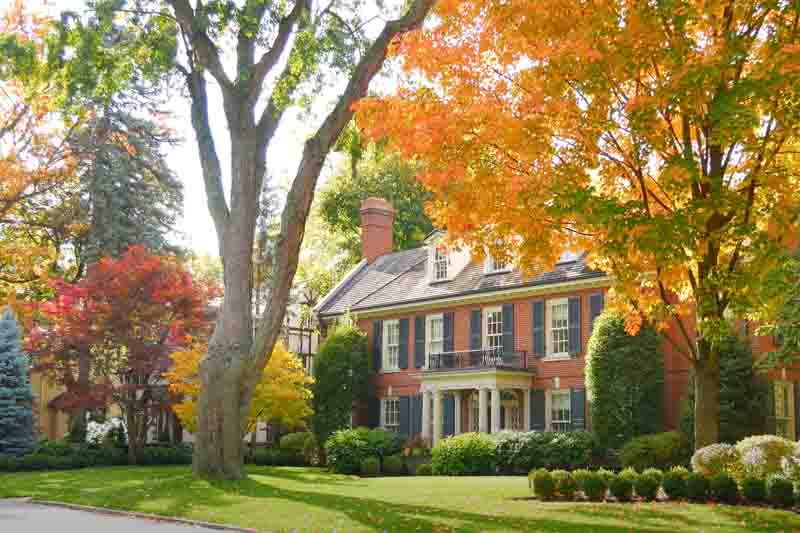
Which tree has the longest fall color display?
The tree with the longest fall color display often varies by region and weather conditions, but Oaks and Maples are known for their prolonged coloration, often lasting several weeks.
What are the first trees to change color in the fall?
Certain Maples, like the Red Maple (Acer rubrum), are among the first to show fall colors, transitioning as early as late summer in some regions.
What tree is known for its golden fall foliage?
The Ginkgo tree (Ginkgo biloba) is renowned for its striking, bright golden-yellow foliage in the fall, transforming landscapes with its vibrant color.
What tree turns bright red in the fall?
The Sugar Maple (Acer saccharum) turns a brilliant red in autumn, making it a standout choice for vibrant fall color.
What tree turns purple in the fall?
The Eastern Redbud (Cercis canadensis) can show purplish hues in its fall foliage, while the Smokebush (Cotinus coggygria) offers deep purples and reds.
Which oak tree has the prettiest fall color?
The Scarlet Oak (Quercus coccinea) and the Red Oak (Quercus rubra) are celebrated for their beautiful red fall colors, with the Scarlet Oak being particularly noted for its vibrant, scarlet-red leaves.
Create a garden that commands attention throughout the year by selecting trees that excite interest month after month and provide a ravishing show throughout all four seasons.
Planting an oak tree offers numerous benefits: it provides a vital habitat and food source for wildlife, significantly sequesters carbon to combat climate change, improves air quality by filtering pollutants, enriches soil health through its leaf litter, and aids in water conservation with its extensive root system.
Crafting an enchanting hedge in your garden is a rewarding endeavor. Hedges serve as living boundaries, offering privacy, beauty, and structure. Explore a world of possibilities with various shrubs, each contributing its unique charm to create the hedge that suits your landscape vision.
Native shrubs for shade offer a natural, low-maintenance solution to beautify shaded garden areas. They thrive with minimal care, support local wildlife, and maintain ecological balance. Ideal for under tree canopies or north-facing gardens, these shrubs add color, texture, and year-round interest while fostering a healthy, biodiverse landscape.
Enhance your garden with flowering shrubs that love the sun! These vibrant, sun-loving plants bring color, fragrance, and life, even in the brightest spots. Ideal for creating dynamic landscapes, they offer varied blooms and sizes, perfect for any garden seeking a burst of color and natural beauty.
To attract butterflies to your garden, plant a variety of nectar-rich flowers and host plants for caterpillars. Choose colorful, fragrant blooms and include native species. Provide sunny, sheltered spots for basking, along with a water source. Avoid pesticides to ensure a safe habitat for these delicate, pollinating insects.
Begin your journey to growing majestic oaks by following these steps: Select healthy acorns, perform a viability water test, stratify those that need dormancy in a refrigerator, plant in well-draining soil at the correct depth, ensure ample sunlight and water, and protect young saplings from wildlife and environmental stressors.
Native oak trees are the crown jewels of any landscape, offering enduring beauty, wildlife habitat, and ecosystem support. With their majestic stature and vibrant foliage, they stand as living monuments, connecting past and present while enriching your outdoor space with their timeless grace and ecological significance.
Some trees and shrubs display beautiful fruits in late summer or fall, which persist into winter. In a glorious display of crimson, orange, yellow or even purple, their attractive berries adorn their branches in eye-catching bouquets, which gleam like jewels in the soft sunlight.
Dogwood trees and shrubs offer a diverse array of choices for gardeners. Popular varieties include the flowering dogwood (Cornus florida) with its iconic white or pink blooms, the kousa dogwood (Cornus kousa) known for its late-spring flowering, and the red-twig dogwood (Cornus sericea) prized for its vibrant red branches in winter.
Select a ficus species that suits your indoor lighting; place in bright, indirect light. Water moderately, allowing soil to dry between waterings. Maintain consistent temperature and humidity. Fertilize seasonally. Watch for pests and diseases. Prune occasionally to maintain shape and promote healthy growth. Enjoy your thriving indoor ficus tree!
Most Cypress trees are evergreen conifers in the Cupressaceae family, prized for their needle-like foliage and woody, acorn-shaped cones. They vary in size and shape, thriving in diverse climates. Cypress wood is prized for its durability and rot resistance, making these trees valuable for both ecological and landscaping purposes.
Discover the top palm tree varieties ideal for home gardeners. From towering majesties to compact beauties, these palms offer a range of sizes and styles, perfect for enhancing any garden. Embrace their tropical allure and transform your outdoor space into an exotic paradise with these perfect picks.
Betula, commonly known as birch trees, encompass various species admired for their elegant, peeling bark and delicate leaves. Native to many parts of the world, they thrive in diverse landscapes, offering ornamental value and habitat for wildlife. Notable species include Betula pendula (silver birch) and Betula nigra (river birch).
Despite the myth that orchids are fussy and difficult to grow, many orchids are not as delicate as most people think. They can adapt to the temperatures and light conditions found on the average home windowsill and be rewarding indoor plants. Many orchids are winter bloomers, which makes them even more desirable as houseplants.
From roses to sunflowers and daisies to tulips, learn about the types of flowers and their unique characteristics.
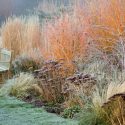
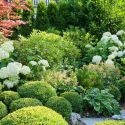
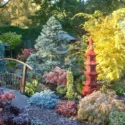
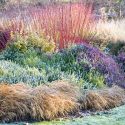

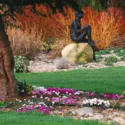
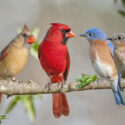




Create a membership account to save your garden designs and to view them on any device.
Becoming a contributing member of Gardenia is easy and can be done in just a few minutes. If you provide us with your name, email address and the payment of a modest $25 annual membership fee, you will become a full member, enabling you to design and save up to 25 of your garden design ideas.
Join now and start creating your dream garden!
Create a membership account to save your garden designs and to view them on any device.
Becoming a contributing member of Gardenia is easy and can be done in just a few minutes. If you provide us with your name, email address and the payment of a modest $25 annual membership fee, you will become a full member, enabling you to design and save up to 25 of your garden design ideas.
Join now and start creating your dream garden!